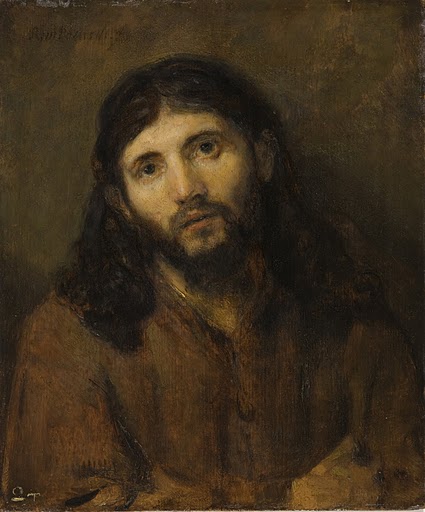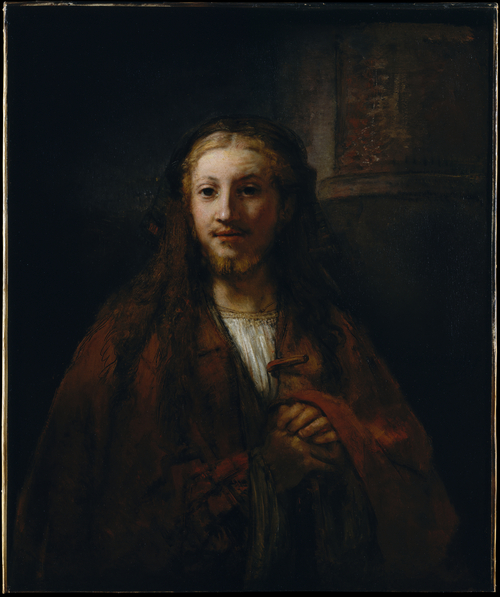
Back to Basic Blonde - Rembrandt Re-reconfigures Jesus in 1661
Rembrandt’s Jesus – “From Life”
In 1656, Rembrandt Harmensz van Rijn (1606-69) went bankrupt. These were the pre-Gagosian days, when artists themselves mismanaged their own affairs. An inventory of Rembrandt’s property was compiled, which included three paintings of Jesus, “painted from life”.
Painted from life presumes that Rembrandt painted Jesus himself. Was it a miracle? It was Jesus, after all. Or was the painting, rather than Jesus, made from life?
On view – but closing today – at the Philadelphia Museum of Art (and opening at the Detroit Institute of Art on November 20) are six paintings attributed to Rembrandt which depict Jesus in the understated style of Rembrandt from the late 1640’s and early 1950’s. Two more pictures, painted by followers of Rembrandt, depict Jesus in the same way – dark complexion, dark eyes, dark hair parted in the middle, a coarse dark garment around his shoulders, a soft and humble expression, an absence of the radiant glow that artists before and during Rembrandt’s time deployed to indicate the divinity. The pose and the style of portraying a meditative Christ recalled another series of pictures by Rembrandt, The Supper at Emmaus, in which Jesus revealed himself at a table with ordinary men. In those pictures, Jesus was a man among men, clothed like them, who lived what he preached from the ground up.
Did Rembrandt see Jesus as heavenly, or homeless?

A Meditative Humble Christ - from "Rembrandt and the Face of Jesus" (picture from Detroit Institute, ca. 1648-54)
There’s no doubt as to whom Rembrandt, a Protestant, is painting, yet his subject’s origins are the question. It seems that the master selected a model from Amsterdam’s growing Jewish community for his panting from life, and that the “model” would have been of Sephardic, or Spanish origin. This Jesus wasn’t Christ the King of the Renaissance, or the heroic athlete seen in so much European painting. This was a human Christ, which looked different than the Jesus of Italy and Northern Europe, but would be recognizable in Byzantine paintings of Christ and depictions of Jesus by El Greco, who took the Byzantine tradition from Greece to Spain. The pictures stress Jesus as a Jew, a troubling truth for many of Rembrandt’s Christian peers.
Rembrandt painted images of Jesus almost as often as he depicted himself, and he was a prodigious self-portraitist. If you’re in Philadelphia today, see Rembrandt: The Face of Jesus. The show travels to the Detroit Institute of Art next month. It was already at the Louvre in Paris. For context, you can always find more Rembrandts to compare them with at the Rijksmuseum in Amsterdam.
Debate remains over whether Rembrandt is the author of all of these works, which can be followed in the catalog better than on the wall of an exhibition – although there’s no substitute for the paintings themselves. The exhibition won’t end those arguments.

Back to Basic Blonde - Rembrandt Re-reconfigures Jesus in 1661
Yet the depiction of Jesus seen here seems wildly (or meditatively) at odds with the frenzied evocation of Christianity in the political debates today. This is the Christ of the coarse clothing that leads by example rather than by performing miracles.
You won’t recognize this face in the call among presidential candidates for higher tax cuts, cheering for the death penalty, fighting a jihad against immigrants or demanding a nuclear strike on Iran. No word yet on whether any of the Christian aspirants has visited the exhibition. One of them, Rick Santorum, is from Pennsylvania.
